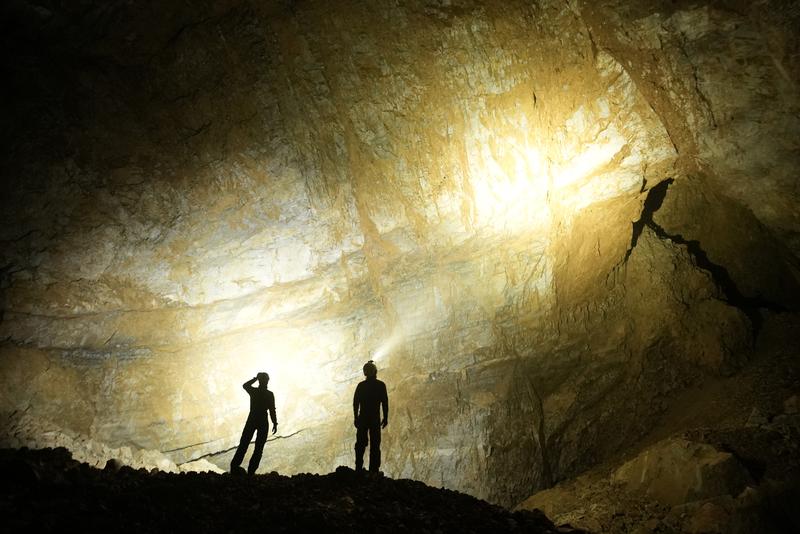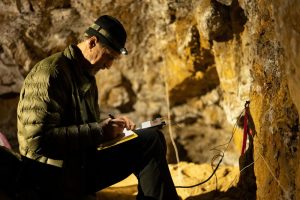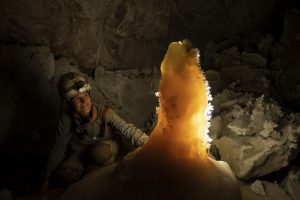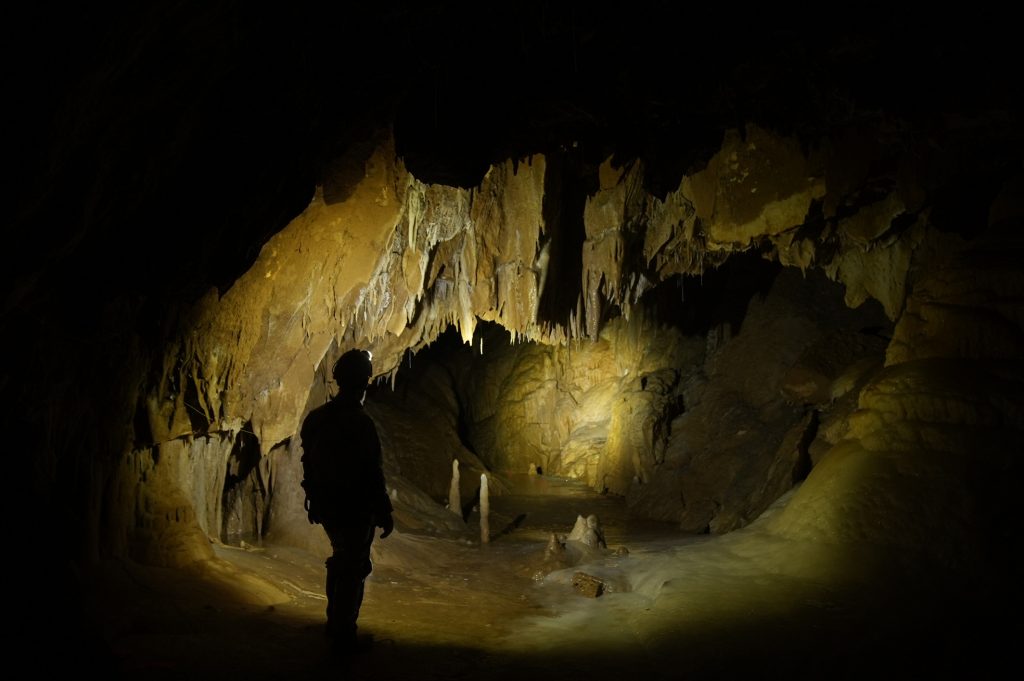‘Explorer: The Deepest Cave’ Shows Cavers on a Mission

National Geographic’s Explorer: The Deepest Cave is a documentary chronicling the journey into the Cheve Cave in Oaxaca, Mexico. The goal of the team – led by the respected and renowned caver Bill Stone – is to prove that Cheve is the deepest cave in the world.
At over 7200 feet, the feat has been compared to Mount Everest. The deeper they go into the cave, the greater their obstacles become. They don’t lose spirit, though, as we see in the documentary.
Most docs can be sort of dry when they focus only on the goal. National Geographic has a way of making documentaries engaging and relatable. The interesting thing about Explorer: The Deepest Cave is that it’s equally about Stone and how Cheve has been his lifelong mission. At 68 years of age, Stone has so far traversed over 12 miles of cave. The group of spelunkers zig-zag under hundreds of feet with unpredictable terrain surrounding them completely.
We follow Stone and company as they prepare for and endure a 3 month mission to go deeper into the cave. What I found fascinating was the care and passion that goes into not just cave diving, but the preparation. There are stations setup because of the pressure and the lateral lengths, time to the surface is measured in days. We see the cavers squeeze through tiny holes hoping to find the path of least resistance. The doc is not recommended for those who are claustrophobic!

Stone has set up a prep course outside where the cavers train for days before hitting the cave. He has had casualties on his watch and safety is his utmost concern. Everything is planned to a T, but it’s hard to plan when Mother Nature often has her own idea of how things will go. Through it all, we see the group become a community, and we see as Stone comes to terms with the idea that if they don’t complete the mission in this season, he may have to pass along his vision to the next generation. It’s a daunting conclusion and only shows more of the passion Stone has for the art of the dive.
Along with Stone, Kasia Biernacka was among those that went into the cave with Stone. Biernacka is the Director of Photography for the documentary and a fellow cave explorer. Based in Poland, Biernacka has been exploring deep caves for 20 years and has been a part of Stone’s Caving team. I had the pleasure of talking with her about the film.
The Geekiary: Tell me how you became involved in the project as a documentary and in the project as a cave explorer.
Kasia Biernacka: I’ve been a part of this project exploring the Cheve cave for 10 years. I met Bill [Stone] back in 2001 and I’ve been on every expedition except the year my daughter was born. I know all of the team members and the cave already.
I also had experience with filming from previous projects years ago. I’m a very visual person working with both film and photography and caving which is a very unusual mix. So it was kind of natural for Bill – when he had this project in mind – to ask me. He knew my experience and trusted me as a caver.
TG: You mentioned you’re a very visual person, but caves are notoriously unforgiving when it comes to darkness. What is it about cave photography that appeals to you?

KB: It’s very unique. It’s like the underground world is unknown to most people, so my goal is to share my vision of the underground, of the caves, and show people how beautiful and fragile it is. It’s also appealing because I have to bring all of the lights to the scene. For filming we use the lights of the cables, but for photography I had to bring electric strobes.
So creating light is quite the challenge, but I like to play with it. I can leave the scene the way I wanted it because there’s almost no ambient light so it’s a creative process. Darkness and light, they’re opposites, but somehow the dark background helps to show the beautiful formations or amazing rock surfaces or people moving through the cave. So it’s a challenge, it’s creative, it’s filming, it’s art.
TG: You mentioned that you’ve been involved since 2001 and I know this has been called a multi-decade/multigenerational project. How often are you able to make these attempts and what are some of the challenges of preparation?
KB: It’s usually once a year and never more because organizing a big cave expedition can be a very big logistical effort. Sometimes it takes 2 years. It is based on weather conditions. To explore this cave which has rivers in it, we have to wait until the level of water is lowest, which happens in Mexico at the end of the dry season. This is usually mid-February through the end of May.
TG: That dedication is so amazing! Did you find that Bill was as much of a draw as the cave itself? He’s a fascinating character. Does he inspire more confidence when it comes to exploring the cave?
KB: He’s a very special person and I have lots of respect. And I like him a lot! I met him 20 years ago and it feels like he’s part of my family. He’s a visionary and I like his vision. I think the world needs more visionaries. He has the courage to keep exploring and it’s not an easy task. We have a group of people who like to explore and Bill is the center point of the exploration. I cannot imagine these expeditions happening without him.
TG: Even at 68, Bill is athletic, and you mentioned going after having a baby. With this being the kind of task where you go a few miles and then have to stop for another year, do you find that you’re inspiring young recruits to take more of those risks on the front lines?
KB: We see young people coming every year. The average age was much older, but now we see younger people climbing which is amazing because it’s a tough job. Bill’s physical form is astonishing, I hope I will be the same when I’m his age. I’m getting close, but yes, I can feel my age. But we also say that caves make us younger. I feel younger after every expedition! Maybe that’s the secret?

TG: Tell me about the importance of documenting this process and what message you want the audience to take away from your journey.
KB: There are actually a couple of messages. The first is about caves themselves. They are fragile and I think underappreciated. People know very little about caves, though that’s where our water comes from in most places. It’s really good to know about the hydrology of the mountains that surround you. It’s important to protect the caves in Mexico. In many places people just dump trash so it’s important to protect the caves.
Then, I really like how this is about a group effort. We are about working together and cooperation. About collaboration and trust. I’m a very tribal person, I need my tribe around me, together we can do more than individually.
The third message is about nature. Leave your box sometimes and just get out. It doesn’t have to be a cave, just get to the forest and stay in nature and enjoy it. It’s so relativing to be disconnected, and very refreshing.
Explorer: The Deepest Cave is showing now on National Geographic and will be available for streaming on Disney+ this summer.
Author: StickyKeys
Help support independent journalism. Subscribe to our Patreon.
Copyright © The Geekiary
Do not copy our content in whole to other websites. If you are reading this anywhere besides TheGeekiary.com, it has been stolen.Read our






